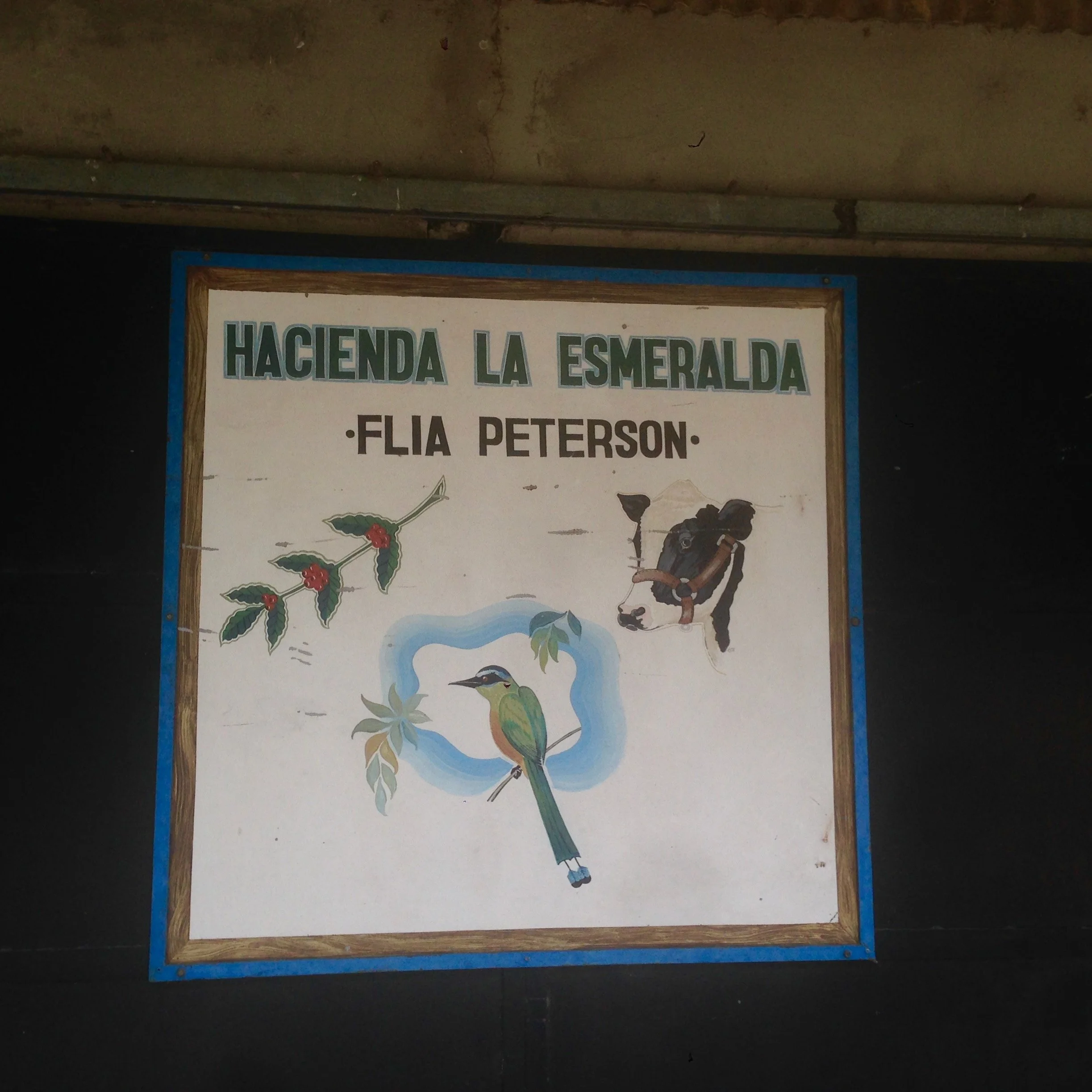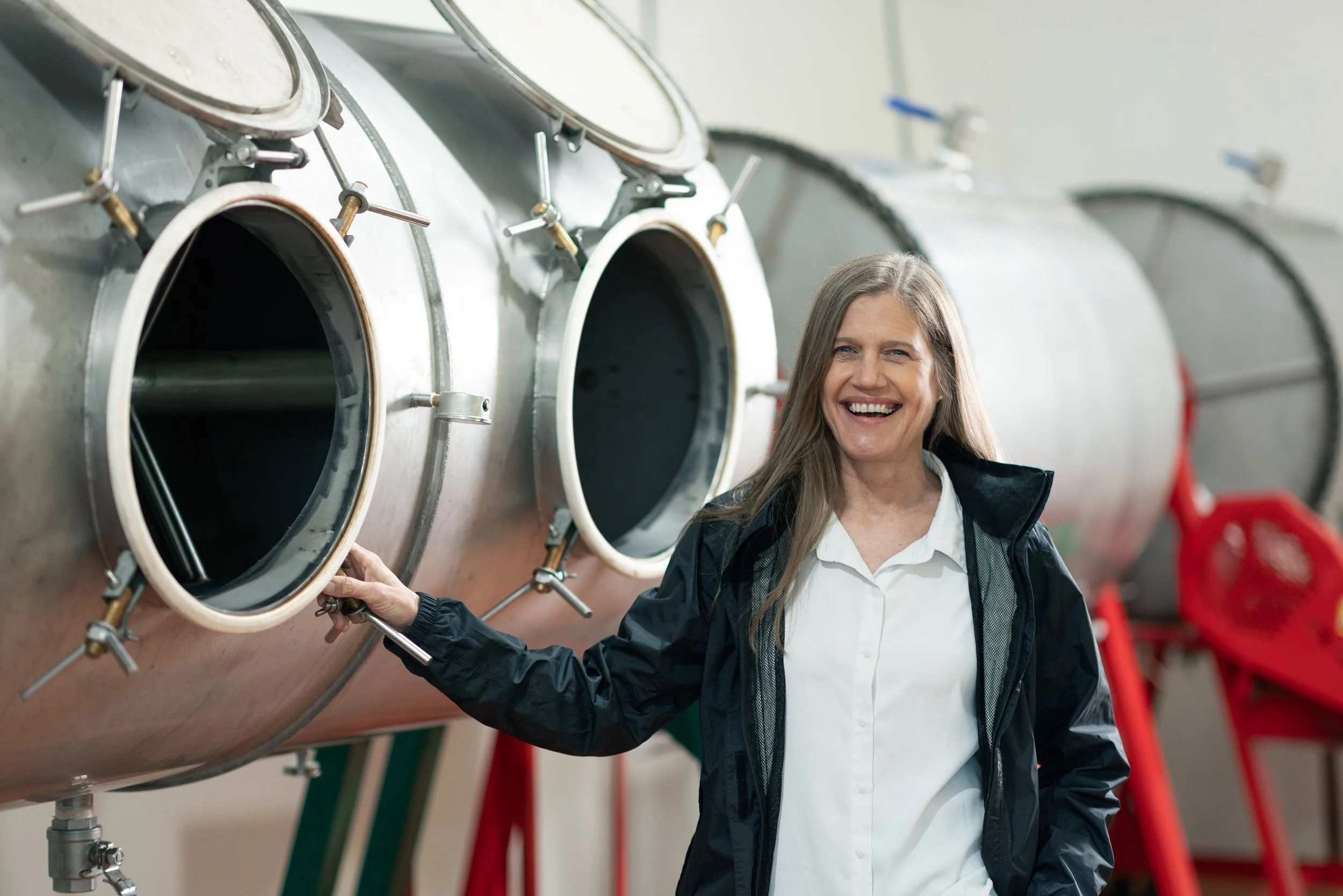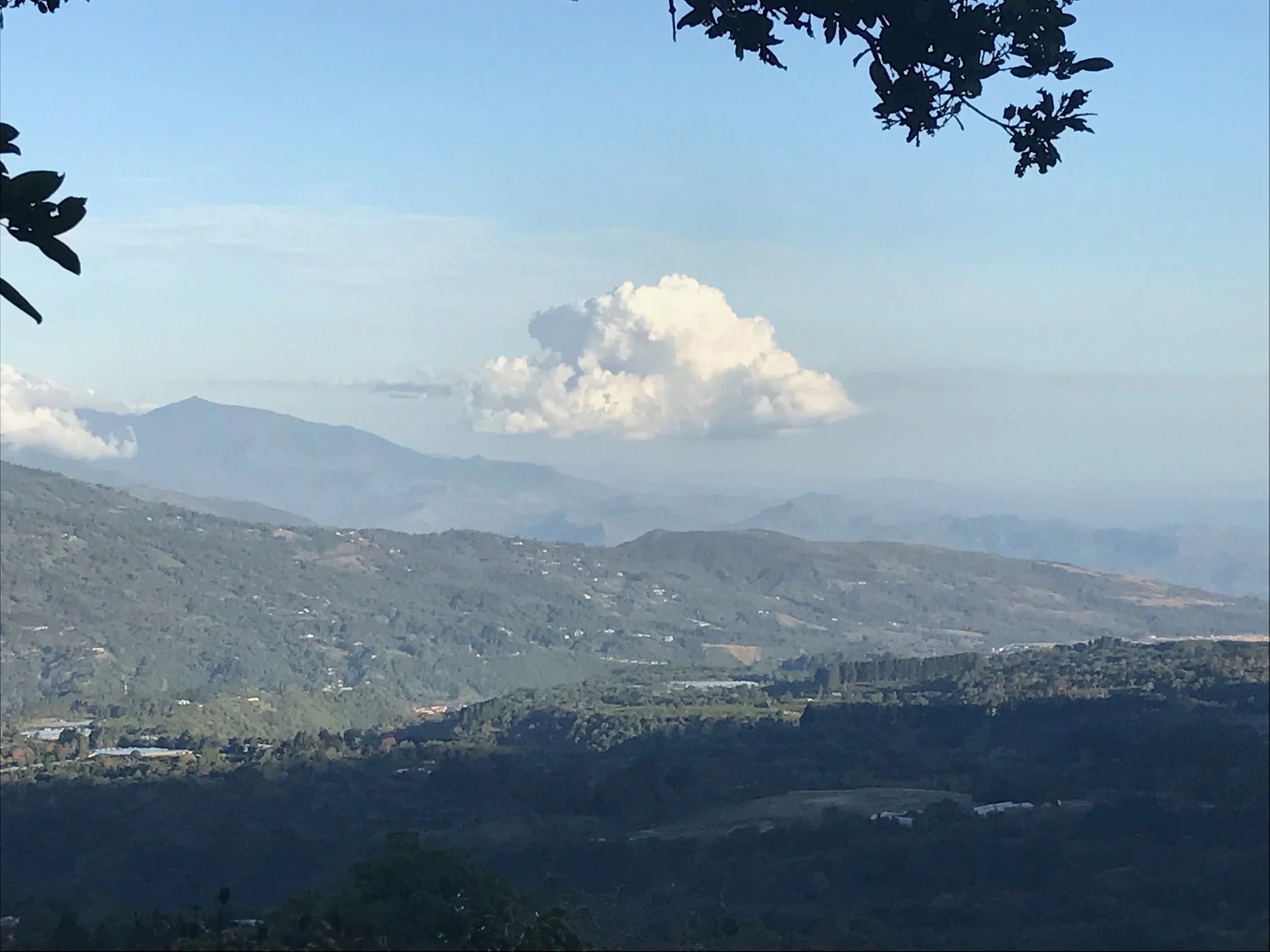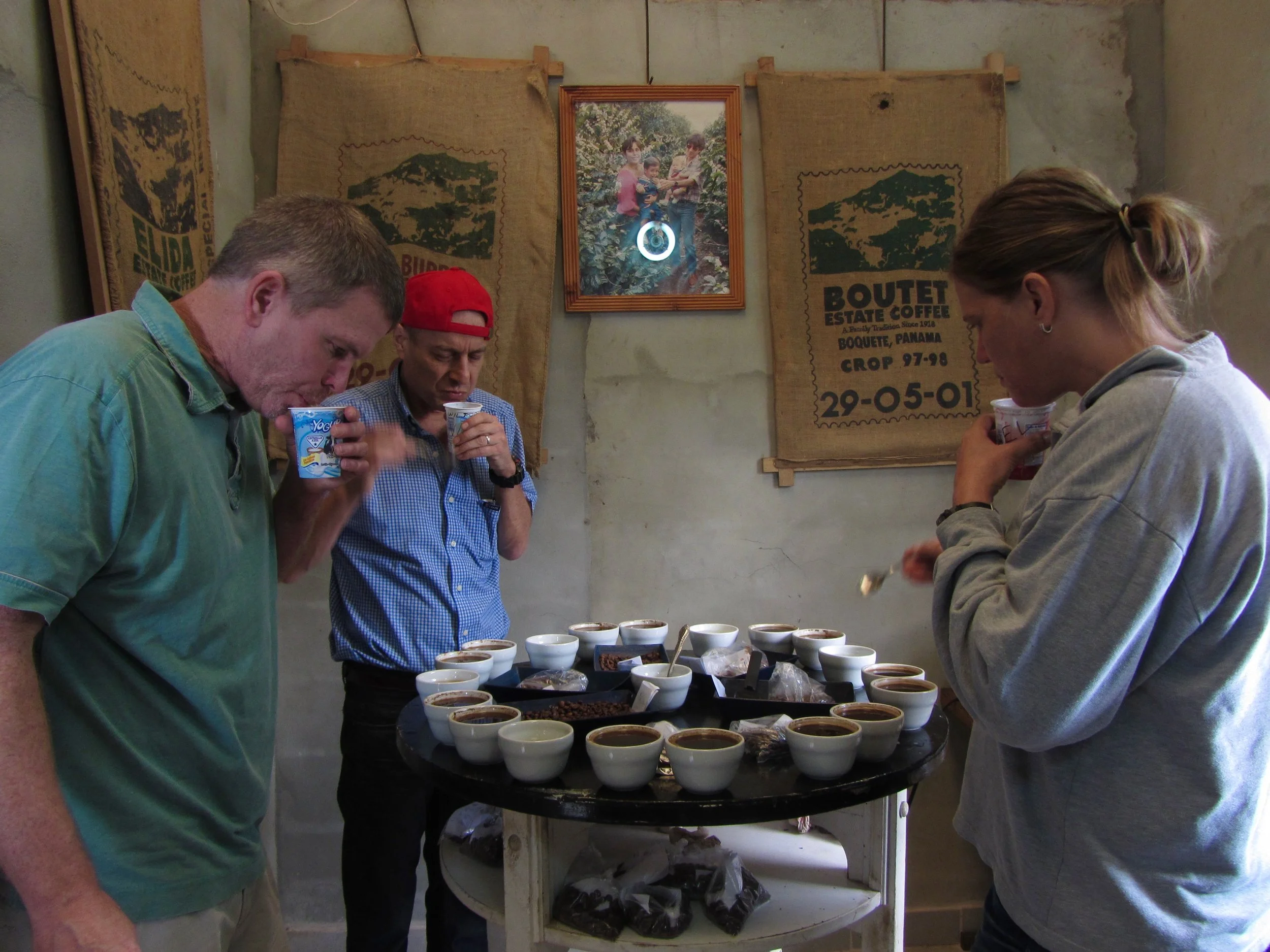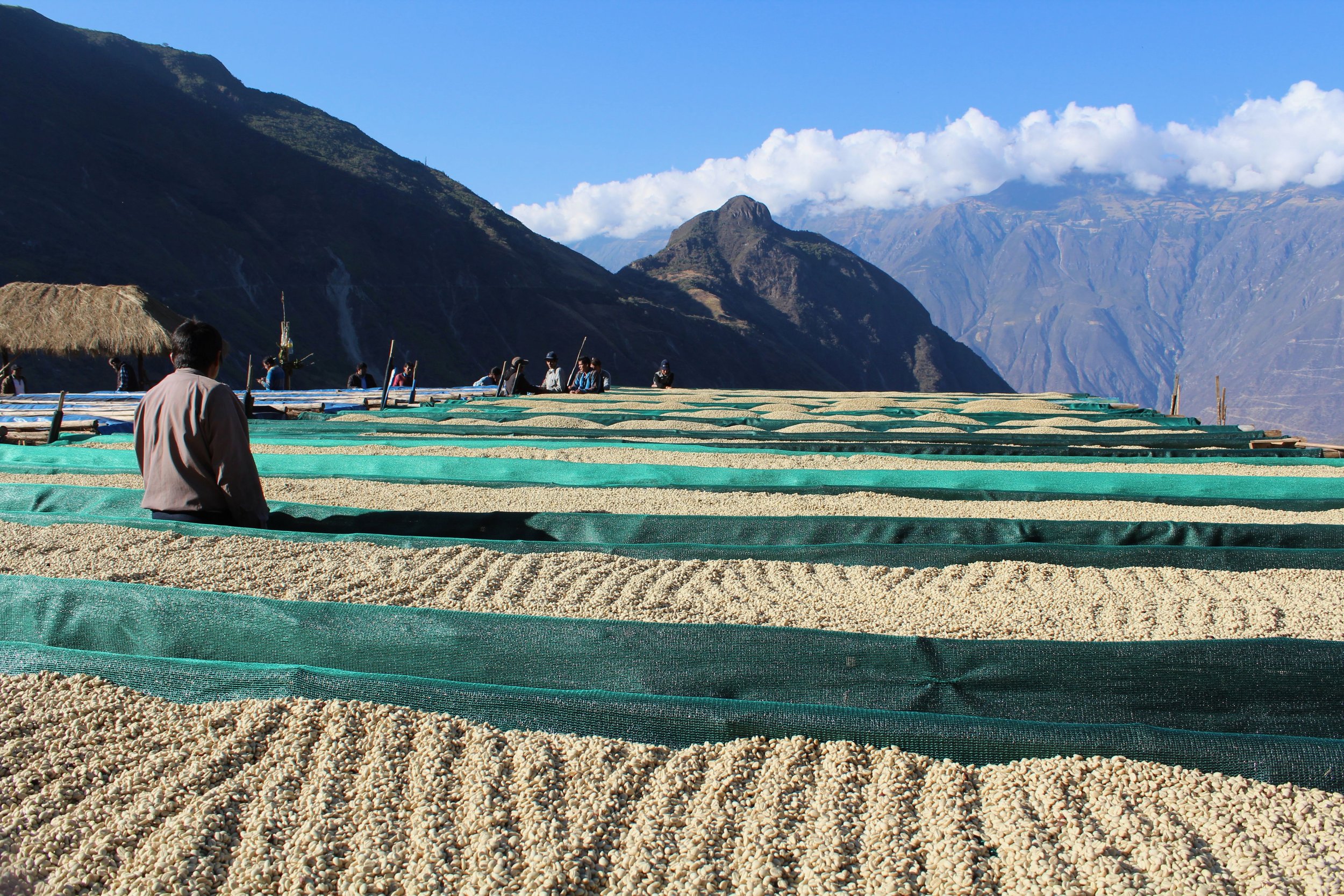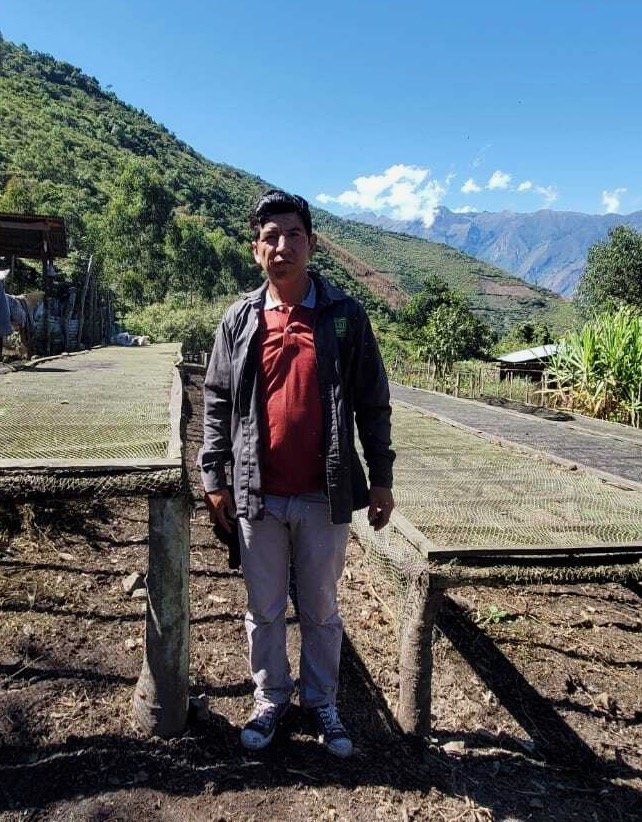What is the big deal about Geisha Coffee?
Ask the casual coffee drinker what they know about Geisha coffee and their first response will probably be, “It’s expensive.” True. Geisha coffee from the growers who have a deep understanding of how to grow and process the varietal will be expensive. For reference, current green coffee pricing for excellent specialty coffee is around $6.00/pound (up from around $4.00 just a year ago) while green Geisha coffee from a reputable farm will sell for upwards of $50-$100/pound. In coffee’s almost 500 year history, the most money ever paid for a pound of coffee was for a Geisha lot— grown by Panama’s Elida Estate in 2019 and sold at auction for over $1000 a pound.
Processing Coffee at Elida Estate.
But there is more to the Geisha’s story than just the price. The varietal was first identified in the 1930s in the Gesha region of Ethiopia. Seeds were planted in Costa Rica in the late 30s and it’s cultivation spread to Panama and other parts of Central America. However, the Geisha fell out of favor with coffee growers due to it’s low yield — even though it was more disease-resistant than other coffee varietals popular at the time — and pretty much fell off the coffee world’s radar.
Hacienda La Esmeralda
It was not until 2004 when the Peterson family rediscovered the Geisha on their farm Hacienda la Esmeralda in Boquete, Panama when the lore of Geisha coffee really took hold. The Peterson’s Geisha became famous because it was so unique compared to anything else produced at the time. A good washed Geisha is floral and perfume-like in character with heavy notes of Jasmine and stone fruit with a profound sweetness that is uncommon.
Rachel Peterson
The Peterson family soon mastered the growing and harvesting techniques for this varietal and Geisha became THE darling of the specialty coffee world. Every third-wave roaster in the 2000s needed a Geisha on their offering sheet at some point in the year, and because of this crazy demand it was not long before just about every farm in Boquete had multiple plots dedicated to Geisha coffee. Once farmers outside of Panama started hearing about the record-breaking prices paid for the bean, one could find Geisha growing not just all over Central America, but in Colombia, Bolivia, Peru, Ecuador and even Kenya.
That said, just because it is a Geisha doesn’t mean it tastes good. The shrub is low-yield and requires not only extra care when compared to other varietals, it also requires perfect growing conditions to produce the unique flavor characteristics it is known for — a very high elevation and a micro-climate similar to that in Boquete with its volcanic soil and cool temperatures year around.
Many growers planted Geisha dreaming about the financial windfall when it came time to harvest only to find that their Geisha was subpar and simply could not command the money they were hoping for. The varietal may have been overplanted and its reputation suffered a bit. At times it has been labeled “overrated” given that both roasters and consumers were over-paying for an average coffee-drinking experience. Sadly there is still a lot of mediocre Geisha out there that roasters are selling for a lot of money.
Boquette, Panama
While Geisha can now be found in almost every coffee-growing country, I believe the very best Geisha in the world is still grown in Boquete and its neighboring growing regions; the farmers growing Geisha in and around Boquete are artisans and the farming community there is a close-knit, family-like network. Sure there is a bit of competition between farms, especially when the annual Best of Panama rolls around, but there is also a lot of knowledge-sharing — as though each farm is on the same team working together for a common goal; they are all eager to experiment and to try new approaches to processing, harvesting, and growing this wonderful bean. What works for one farm, is often shared, adapted and refined by other farms in the area and this collaboration has only helped Geisha coffee reach new heights not only with how it tastes, but certainly with how much money Panama Geisha can now command.
Cupping with Wilford Lamastus and Rachel Peterson at Elida Estate, 2011.
When Geisha is grown in other parts of the world, the grower can often be more isolated and working more on theory and/or personal experience which means it can take more harvests for a grower to truly master how to grow and process the coffee. This does not mean one can only find great Geisha in Panama. Colombian farmers have proven they can produce exceptional Geisha as have framers in Bolivia and Ecuador, for example. Sometimes these Geishas can lack a bit of the depth and complexity of a Panama Geisha but the price paid for Geisha grown in Colombia or Bolivia is often a fraction of the Panama cost.
Coffee-drying beds, Cusco, Peru
Have you tried a Geisha coffee before? Well, if not you are in luck because we are offering an affordable Geisha from Peru produced by famed Peruvian grower Lucio Luque. Lucio has a reputation as one of the top producers in Peru and is know from mastering varietals not usually found in the region. His farm is also located in an optimal Geisha-growing environment with an elevation that reaches 2200 meters above sea level, higher than where most Geisha is grown in Panama.
This high elevation slows the maturity of an already slow maturing bean while heightening the perceived level of sweetness and complexity. Lucio’s Geisha is by far the sweetest coffee I have tasted, and not just a momentary sweetness in the cup; the sweetness in this Geisha lasts forever with an exceptionally long clean finish.
Offered here at less than half of the cost of a Panama Geisha, this is a rare opportunity to explore the fascinating varietal without breaking the bank.


